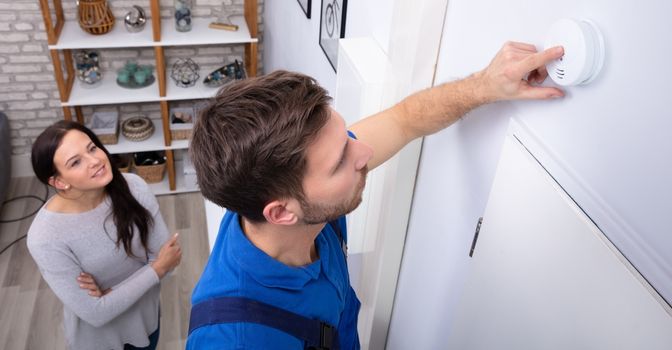One of the most important aspects of staying safe at home is fire safety.
Prevention is always the best strategy. You can help prevent fires in the home by being aware of some of the common causes which include faulty electrical appliances, heaters, cigarettes, candles and charging phones or tablets on or near a bed.
But it is also vital to have a home fire escape plan in place in case there is a fire. Planning ahead ensures you are more prepared and gives you and your family the best chance of escape.
3 simple steps.
Following three important steps can help you stay safe if there’s fire in your home.
- Check that your smoke alarms work
- Create a home fire escape plan
- Practise your escape plan so everyone knows what to do.[1]
Checking and maintaining smoke alarms.
Correctly fitted and working smoke alarms provide an early warning of fire which increases your chances of escaping safely.
The rules for smoke alarms vary in each state, so check with your local fire authority to ensure you have the correct number and type of alarms installed in your home or apartment.
The following routine is recommended for maintaining smoke alarms:
- Test batteries once a month by pressing and holding the test button for at least five seconds until you hear the beeps
- Keep them clean and remove dust every six months to ensure smoke can reach the sensor
- Replace lead or alkaline batteries every 12 months
- Replace all alarms every 10 years.[2]
Alternative smoke alarms.
If you are hearing impaired, you may be able to use your NDIS funding to purchase a specialised smoke alarm system that will alert you if there’s a fire.
While there are several different options available, most include a combination of flashing strobe lights, a pillow shaker and a beeper.
If you live alone or have restricted mobility, you may also be able to use your NDIS funds to purchase assistive technology that will alert a family member or neighbour if your smoke detector goes off.
What to include in your home fire escape plan.
A fire escape plan is a document that everyone in the household should know about and practise.
It includes:
- A floorplan of your home, with two ways of escaping from each room (a main escape route and a backup escape route)
- An outside meeting place where you all go to if there’s a fire
- Things you will do in your household to stay fire safe such as keeping exits clear and keeping keys near locked doors and windows for easy access
- A plan for supporting any member of the family who needs additional assistance (see below).
NSW Fire & Rescue has an excellent Fire Escape Plan template which you can download from their website and complete for your home. There’s also some valuable information for people who live in high rise or apartment buildings.
Assisted evacuation for people with restricted mobility.
If you or a family member has restricted mobility, it’s important to develop a Personal Emergency Evacuation Plan (PEEP) in consultation with your family and carers. A PEEP will take into account your location and needs and include:
- Nominating a family member and backup family member who will help the case of an emergency
- A plan for what to do if you live on your own
- Identifying a safe area you can go to if you are unable to escape.
Unsure what you can spend your NDIS funds on?
If you’re unsure what you can spend funds from your NDIS Plan on, the Leap in! Crew can help. Chat with us online, call us on 1300 05 78 78 or email connect@leapin.com.au.
Further reading
Staying safe at home: 5 cooking hacks for people with a disability.
COVID-19 update: Masks, PPE and staying safe.
Building confidence to go out as COVID-19 restrictions are eased.
Reference links:

